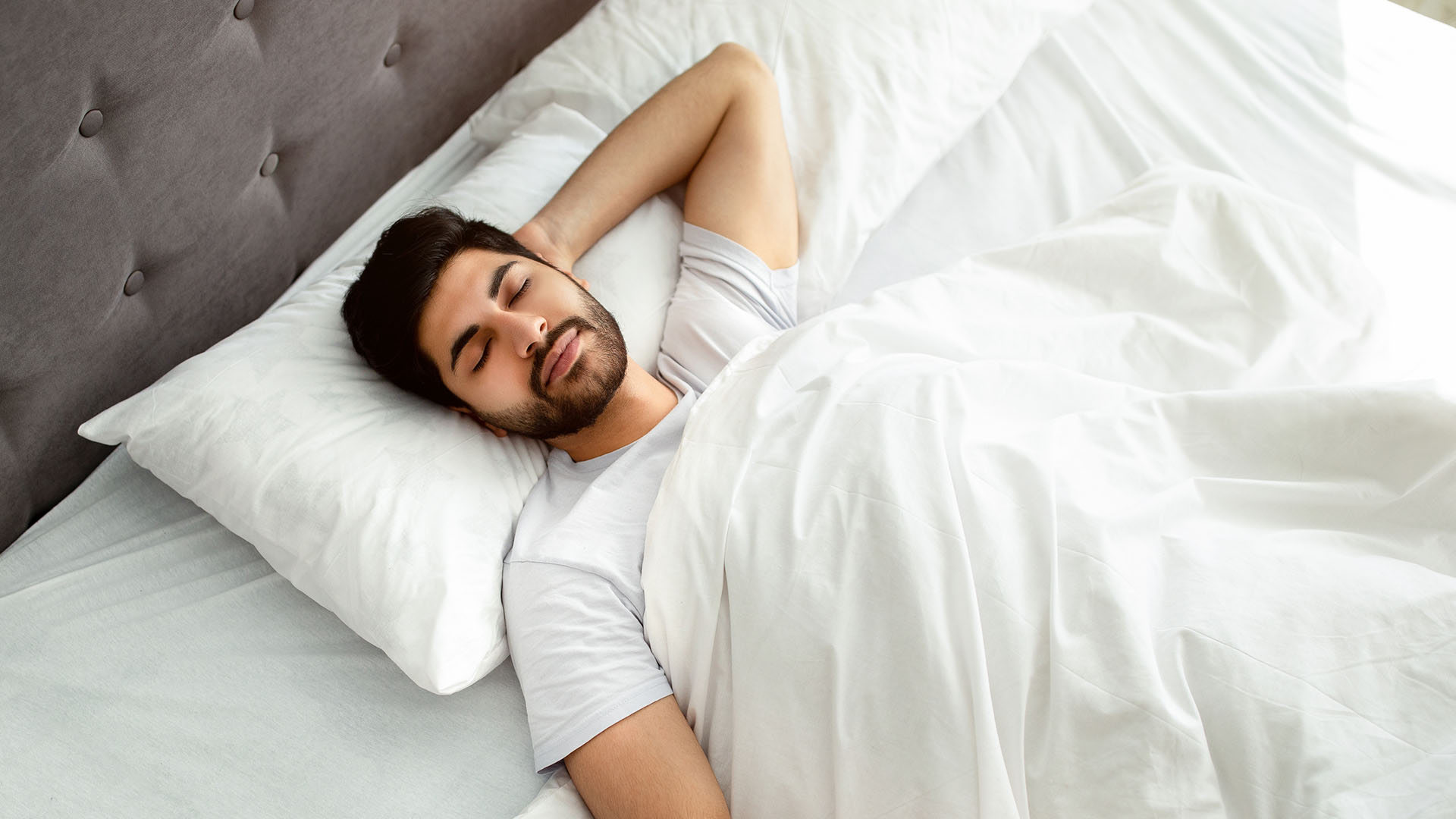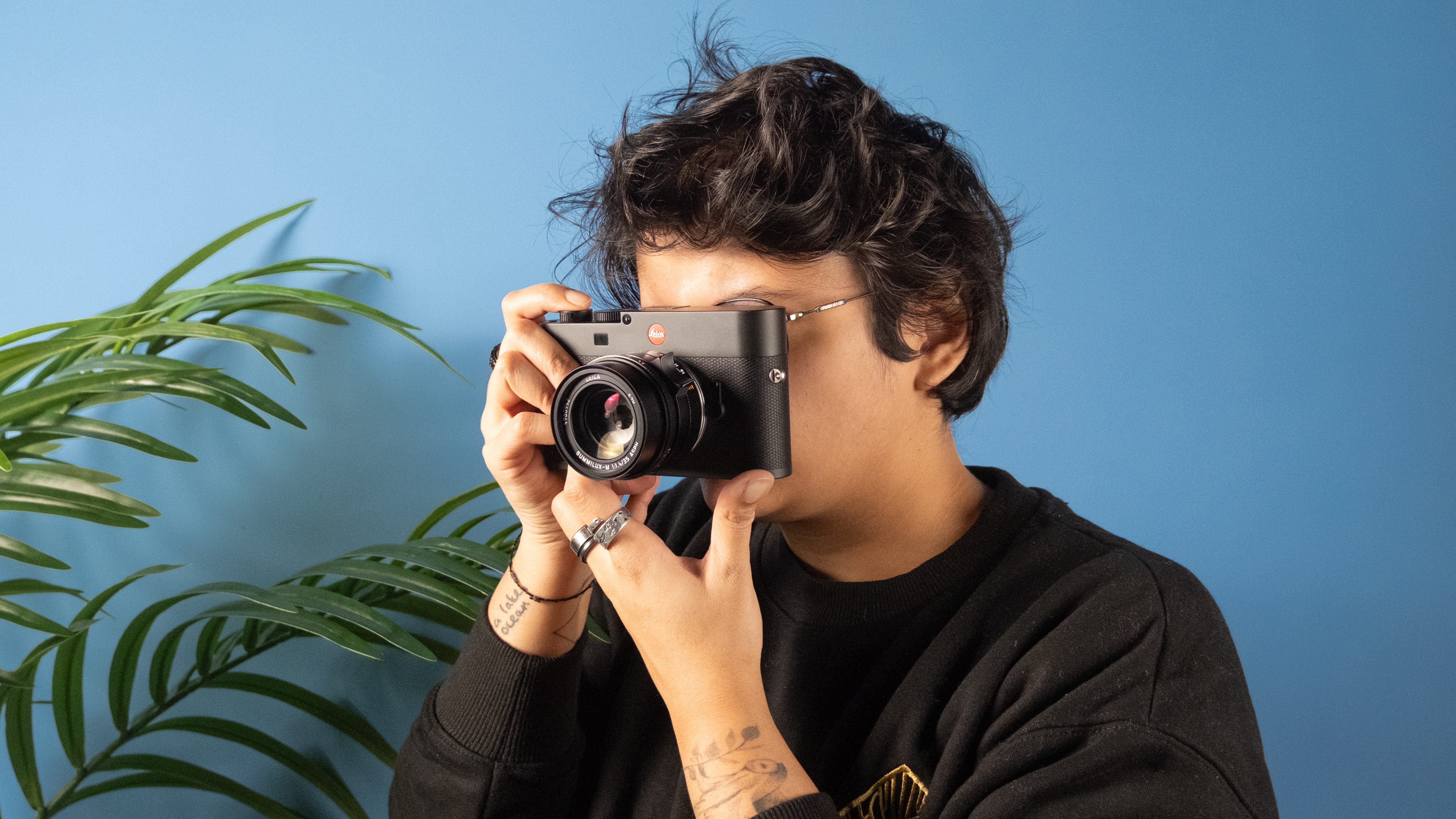How to sleep on your back
Easy methods to improve your sleep health with back sleeping

Back sleeping is one of the healthiest ways to rest, but if you aren't used to lying on your back, it can be hard to adopt this new sleep style. But as a pressure-relieving and spine-supporting sleep position, it's worth making the effort to try and sleep on your back.
The position we fall asleep in might seem like a simple comfort choice, but - just like how sleeping on the best mattress for your sleep needs can impact your sleep quality - your sleep position can play an important role in your overall wellbeing. A healthy back sleeping position allows for the natural curve of the spine, while aiding even pressure relief across the body. This can limit back and joint pain, as well as reduce overall aches and pains. And all you need to achieve healthy back sleeping is a little help from your pillows.
The tips we've gathered here can help you consistently drift off in a back sleeping position, but to make the most of this sleep style, you need the best mattress to match. We'll dive into what to look for in a mattress for back sleepers below, but for now, let's explore why you should sleep on your back, and how to get started.
What are the benefits of sleeping on your back?
Back sleeping is widely considered one of the healthiest positions to sleep in, thanks to the support it provides for the lumbar region. Side sleeping is also a recommended sleep position, but sleeping on your stomach is the unhealthiest sleep position, due to the prolonged pressure your neck and spine is placed under when lying on your front.
But let's dive into the benefits of back sleeping. When lying on your back, gravity is able to distribute weight evenly across the body, taking pressure off the muscles and joints. "This helps your whole body relax, which is the best way for your body to recover," said Aimee Brame, consultant physician from Sleep Centre at London Bridge Hospital, when Tom's Guide spoke to her regarding what back sleeping does to the body.

And weight distribution isn't the only benefit. “Sleeping on your back or your side allows for proper alignment of your spine" explained Dr. Ali H. Mesiwala, neurosurgeon and sports specialist at DISC Sports & Spine Center, when we asked him which is the healthiest sleep position. Allowing for the natural curve of the spine, back sleeping can help you avoid waking up with a sore and creaky lower back.
Back sleeping is good for your body, but that doesn't mean it's easy to break a bad sleep position habit. Thankfully, there are simple steps you can take that will make sleeping on your back feel as natural as closing your eyes and drifting off.
Get instant access to breaking news, the hottest reviews, great deals and helpful tips.
How to sleep on your back: 5 top tips
1. Place a pillow under your knees
To help maintain a healthier back sleeping position, try placing a thin pillow beneath your knees. This slight elevation to the legs helps keep the spine at a neutral angle, and limits tossing and turning in the night.
Elevating the knees also supports the curve of your back, which means your back muscles aren't under stress while you sleep. And when your muscles can relax, your body can get on with recovery (a vital part of sleep). If you don't have any spare pillows lying around, try using a rolled up towel or folded blanket.
2. Place a pillow under the small of your back
Placing a thin pillow beneath the small of your back can provide support and pressure relief for the lumbar region, as well as preventing you from rolling over in the night.
While this tip can limit back pain, it's important to get the loft of the pillow right. Too low or too high and you might find you're less comfortable than before. An adjustable pillow will allow you to experiment with different heights, or you can folding and unfolding a blanket until it's the perfect height.
3. Surround yourself with pillows
If, despite your best efforts, you still find yourself switching to awkward sleep positions in the night, try the pillow barricade method. By placing pillows either side of you during the night, it's much harder to roll over, keeping you in a healthier back sleeping position.

Bed sharers might find this isn't possible (those extra pillows take up a fair bit of room). If this is you, experiment with holding your arms and legs in different positions, until you find something that feels right.
4. Choose the right pillow for your head and neck
We've covered just about every other use for a pillow, so now let's discuss the one that goes under your head. The best pillow for back sleepers are typically medium to medium-firm, holding the head and neck aligned (and not flopping all over the place in the night). Choosing the right pillow can help limit neck and shoulder ache, making maintaining the perfect back sleeping position more comfortable.
5. Try back sleeping for a few minutes each night
When sleeping, we tend to gravitate toward the position that feels natural. It's a hard habit to break, so don't be surprised if you wake up in a worse position than the one you drifted off in. Instead of getting disheartened, try lying on your back for a few minutes at the start of the night, and if you're still awake after 15 minutes, return to your default position.
Over time, this new back sleeping position should begin to feel more and more natural. Engage in some calming breathing exercises when lying on your back to help soothe yourself to sleep and distract your mind.
What are the best mattresses for back sleeping?
Even the best back sleeping position can feel uncomfortable if your mattress isn't offering the right kind of support, the best mattresses for back sleepers gently cradle the body, reducing the stress placed on the muscles for more refreshing rest. Below we'll cover what to look for in a mattress for back sleepers, and three of our favorites.
1. It has a medium to medium-firm tension
Mattresses for back sleepers need to offer a blend of comfort and support. We typically recommend a firmness rating of 6 out of 10 or higher. Softer than this and you're likely to find your hips and shoulders will sink into the bed, placing pressure on the spine.
Firmness is subjective, so take these ratings as guidelines (what feels like a 6 to one person might be an 8 to another). When choosing tension, it's important to factor in your weight and body type. The best mattresses for heavier bodies tend to have a firmer support, to prevent the hips from sinking into the bed – important for back sleepers.
2. It boasts ample pressure relief
We might typically associate plush beds with side sleepers, but if you're lying on your back, you want to ensure you have enough pressure relief. Cushioned relief prevents pressure from building up where the body pushes against the mattress. For back sleepers, these touch points are typically the lower spine, upper back, and shoulder regions.

3. It provides ample lumbar support
Lumbar support ensures the spine is held in correct alignment with the rest of the body and that the natural curve of the spine is supported. When back sleepers don't have good lumbar support, the muscles in the lumbar region have to work through the night, when they should be relaxing. The result? An aching back the next morning.
However, the right mattresses for back sleepers are supportive at the lumbar, rather than soft. Some mattresses even use targeted lumbar support zones to ensure your spine doesn't twist into an awkward angle as you sleep. Our guide to the best mattresses for back pain features plenty of beds with exceptional lumbar support.

Ruth is an experienced Senior Staff writer at Tom’s Guide, covering all things sleep and mattresses. She writes to help people sleep better, from how-tos to the latest deals to mattress reviews, and has interviewed an array of experts who share her passion. She is also our specialist on memory foam — she’s flown around the world to see memory foam being made — and leads our hotel mattress content. She has a deep interest in the link between sleep and health, and has tried enough mattresses, from Helix to Nectar to Simba, to know the right bed really can make a difference to your wellbeing. Before joining the team at Tom’s Guide, Ruth worked as a sleep and mattress writer for our sister website, TechRadar.
